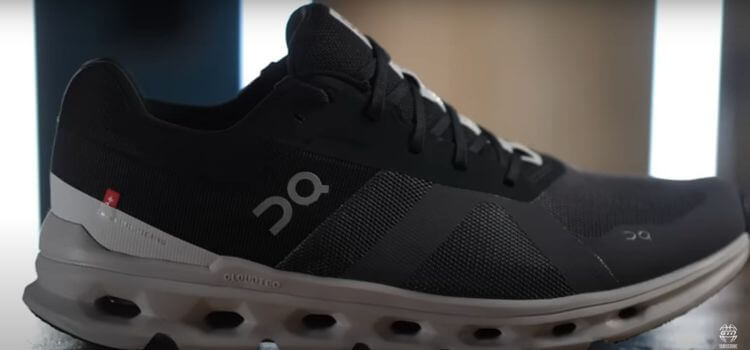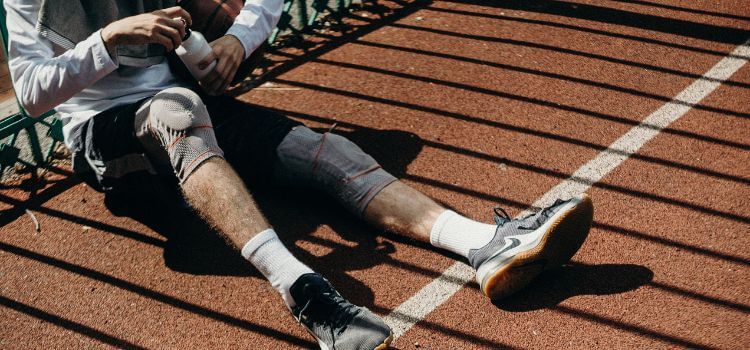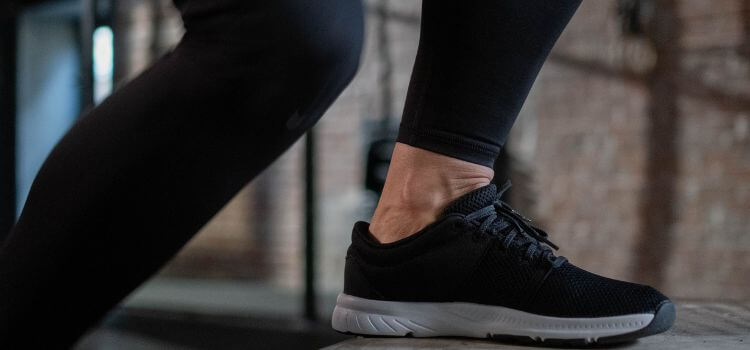Athletic shoes typically last between 300 to 500 miles of usage. The lifespan also depends on running style, weight, and shoe quality.
Selecting the right athletic shoes is crucial for comfort and performance. Whether you’re a dedicated runner, a gym enthusiast, or someone who enjoys the occasional jog, understanding the lifespan of your athletic footwear is essential. Sports shoes are designed to support and protect your feet during high-impact activities, but they have a shelf life.

Factors like the materials used and the terrain they’re subjected to regularly can significantly affect their durability. Regular evaluations of your shoes’ condition can prevent injury and ensure you get maximum benefit from them. Remember, ignoring the signs of wear and tear isn’t just bad for your shoes; it’s bad for your feet, too. Choose wisely and keep track of your mileage to determine when it’s time to replace your trusty athletic shoes.
The Lifespan Of Athletic Shoes
When you buy athletic shoes, you expect them to last. But just like tires on a car, these shoes wear out. They take you on adventures, help in workouts, and support your feet every day. How long they last depends on many things.
Factors Influencing Shoe Durabilit
- Material Quality: High-quality materials can extend a shoe’s life.
- Activity Level: More wear means a shorter life for shoes.
- Type of Sport: Different sports affect shoes in unique ways.
- Care: Cleaning and drying your boots helps them last longer.
- Rotation: Switching between shoes reduces wear and tear.
- Fitting: Well-fitted shoes suffer less damage over time.

Average Mileage Before Replacement
Sports shoes have a mileage cap. This is like a car’s odometer reading. For most shoes, the magic number is between 300 to 500 miles. This is a general rule. Your shoes might last longer or need to be replaced sooner.
| Shoe Type | Low-End Mileage | High-End Mileage |
| Running Shoes | 300 miles | 500 miles |
| Basketball Shoes | 250 miles | 450 miles |
| Tennis Shoes | 400 games | 600 games |
Signs Of Worn-out Athletic Shoes
Knowing when to retire your athletic shoes is key to foot health and performance. They can’t tell you when to move on, but they show signs. Recognizing these signs ensures you replace them at the right time.
Visual Cues To Look For
Closely inspect your shoes for these clear indicators:
- Worn-out treads reduce traction.
- Any rips or holes compromise the shoe structure.
- Uneven wear indicates it’s time for a new pair.
- Overstretched materials mean less support.
These signs signal a loss of integrity in your shoes.
Feeling The Difference
Physical sensations can’t be ignored:
| Feeling | Meaning |
| Diminished cushioning | The midsole may be compressed. |
| Pain or discomfort | Shoes may no longer support you properly. |
| Increased fatigue | Old shoes may lead to tired feet faster. |
Listen to your body; it tells you when to get new athletic shoes.
Impact On Performance And Health
Athletic shoes significantly influence performance and overall health, with their lifespan playing a crucial role. Worn-out sneakers can lead to injuries and decreased efficiency, emphasizing the importance of timely replacements for active individuals.
The right athletic shoes can make all the separation. Quality footwear supports your feet during intense activities. It also helps prevent injuries. Old or worn-out shoes can hurt your performance. They can lead to health problems, too. This is why knowing when to update your athletic shoes is crucial.

Consequences Of Outdated Footwear
Using outdated athletic shoes can harm your body. Here’s what happens:
- Reduced Support: The soles wear down. This means less cushioning for your feet.
- Increased Injury Risk: Worn-out sneakers can’t absorb shock well. This adds stress to your joints.
- Poor Performance: Old shoes don’t grip surfaces correctly. This can slow you down and make it hard to move safely.
Benefits Of Timely Shoe Updates
Changing your athletic shoes at the right time brings advantages:
- Better Support: New shoes protect your feet with better cushioning.
- Enhanced Performance: Fresh outsoles offer better traction for optimal movement.
- Prevention of Injuries: Good shoes keep your ankles stable and reduce strain.
Maintenance Tips To Extend Shoe Life
Lacing up a pair of athletic shoes is the start of a great workout. But have you ever wondered how to keep them in top shape for longer? Follow these simple maintenance tips to extend the life of your favorite sneakers.
Proper Cleaning Techniques
Keeping shoes clean is not just about looks; it’s about longevity. Don’t wait for dirt to settle in.
- Remove loose dirt with a soft brush or cloth.
- Use mild soap and water for tough stains.
- Avoid harsh chemicals that can break down materials.
- Air dry shoes naturally, away from direct heat sources.
Tip: Insert newspaper inside wet shoes to absorb moisture and maintain shape.
Rotation And Storage Best Practices
Just like athletes need rest, s
o do their shoes. Rotate your kicks and store them correctly to add miles to their life.
- Rotate your shoes if you’re active daily. This allows them full recovery time.
- Use a shoe rack to keep them ventilated and avoid deformities.
- Avoid direct sunlight when storing to prevent materials from wearing down.
- Consider utilizing silica gel packets to keep moisture out.
Fact: Rotating between two pairs of shoes can prolong each pair’s life.
When To Invest In New Athletic Shoes

Knowing when to replace athletic shoes is crucial for peak performance and injury prevention. It’s not just about how the boots look. It’s about support, comfort, and the safety they provide. Shoes that are past their prime can lead to discomfort and injuries. Let’s explore the signs that indicate it’s time to invest in a new pair of athletic shoes.
Tracking Usage And Shoe Age
Understanding the lifespan of athletic shoes can prevent unnecessary strain on your feet. Track how often you use your boots and the total mileage they have covered. A general rule is to replace shoes every 300-500 miles, depending on the intensity of your activities.
| Activity Level | Miles Covered |
| Light Activity | 400-500 miles |
| Heavy Activity | 300-400 miles |
Shoe age matters, too. Athletic shoes lose support over time, even if they look new. Consider a new pair every six months if you’re active several times weekly.
Understanding Different Needs By Sport
Each sport has specific shoe design needs. Here’s a quick guide:
- Runners need high shock absorption due to the repetitive impact.
- For basketball, shoes must offer superior support for jumps and quick direction changes.
- Soccer players rely on shoes for traction and control with the ball.
Select shoes designed for the demands of your sport to secure the right support and replace them when they show signs of wear. This includes damaged soles, worn-out insoles, and stretched-out uppers.
Frequently Asked Questions For How Long Do Athletic Shoes Last
What Determines Athletic Shoe Lifespan?
The usage frequency, intensity of activities, shoe materials, and maintenance determine the lifespan of athletic shoes. Typically, a running shoe may last between 300 to 500 miles.
How Often Should I Replace My Running Shoes?
Replace your running shoes approximately every 300 to 500 miles. This translates to every 4 to 6 months for regular runners. Pay attention to signs of wear and decreased cushioning.
Can Shoe Type Affect Durability?
Yes, shoe type affects durability. Trail-running shoes are designed for rugged terrain and may be more durable than lighter-weight, race-specific shoes, which tend to wear out faster.
Does Body Weight Impact Shoe Longevity?
Body weight can impact shoe longevity. Heavier runners may find their shoes wear out quicker due to increased stress and compression on the cushioning materials.
Conclusion
Assessing the lifespan of athletic shoes is essential for performance and foot health. Generally, these sneakers serve you well for 300-500 miles. Signs like tread wear, discomfort, or less support signal it’s time for a new pair. Prioritize your feet’s needs, and stay proactive in replacing your athletic footwear to maintain your stride and safeguard against injury.
Related posts:
- Where To Recycle Athletic Shoes
- How To Choose Athletic Shoes
- What To Spray In Shoes For Athlete’s Foot
- Are Converse Considered Athletic Shoes
- How To Clean White Athletic Shoes
- Are Athletic Works Shoes Non-Slip?
- What Company Developed The First Athletic Shoe?
- What Athletic Shoes are Made in the USA
- How To Stretch Athletic Shoes
- Where Are Hoka Shoes Manufactured
